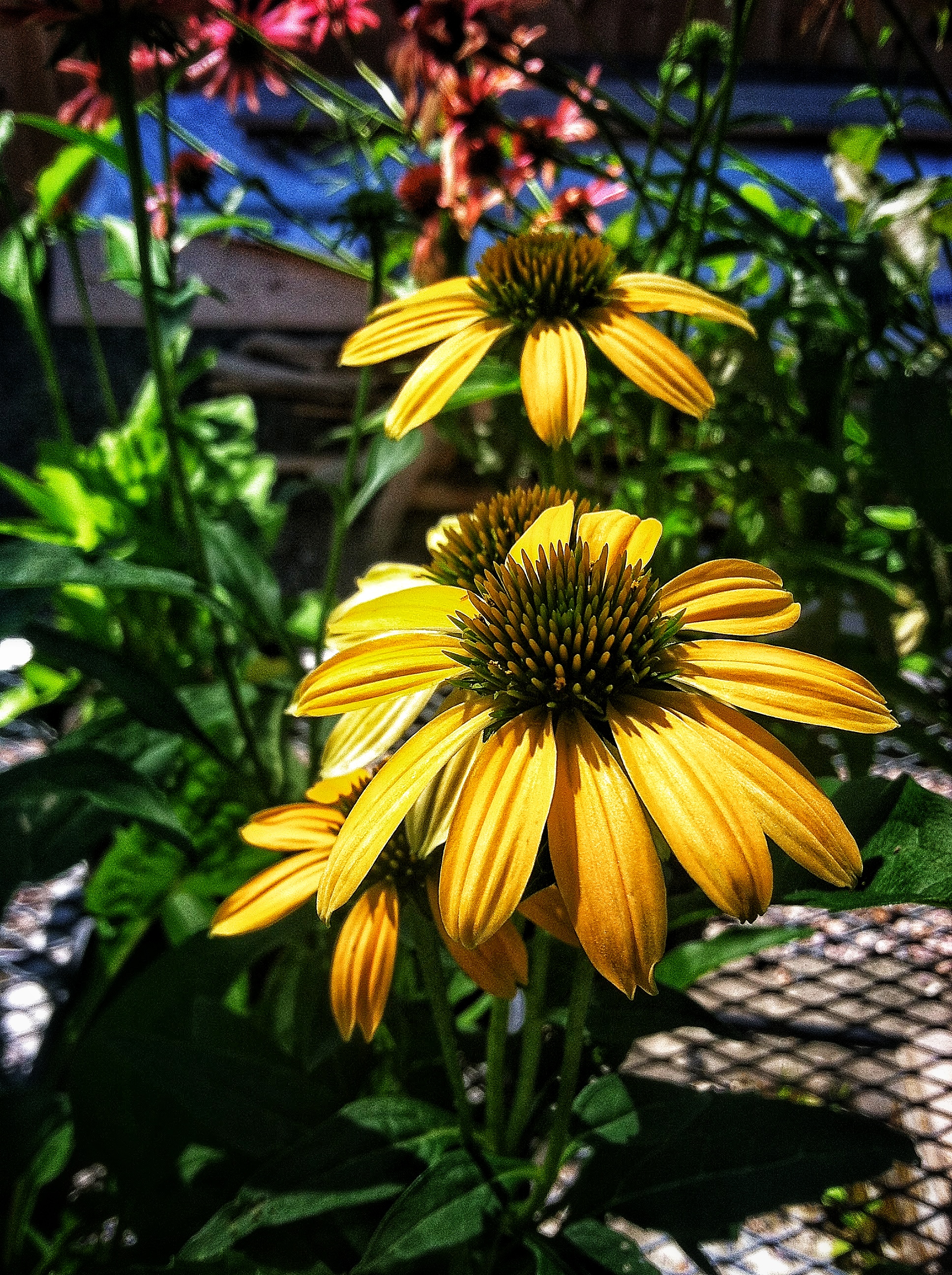Picking Plants for Pollinators
These days the word ‘pollinator friendly’ is popping up everywhere in gardening literature, in nurseries and greenhouses across the country. Plants are now regularly labeled with little bee symbols, and marketed as ‘pollinator friendly’, or ‘attracts pollinators’, and ‘neonic free’. The pollinators most at risk are bees, both honey bees (Apis ssp.) and lesser known native bees such as the bumble and mason bees. There have been an increasing number of articles in the mainstream news about massive bee die offs and what this might mean for us going forward.
This has happily created a huge surge of public interest ways to help the struggling bee population, and now many varieties of plants are coming out labeled as pollinator friendly. A good number of these plants are brand new hybridized varieties of native plants known to attract and benefit different pollinators in their original form.
These flowers, particularly species such as Echinacea purpurea, come in a wide variety of colors, blooming earlier or blooming later, with double blooms or extra ruffles, some compact, some mildew resistant. They offer variety to accommodate different tastes of home gardeners, but some of them may not off the same benefits for native pollinators as the original species.
If a gardener is planning a pollinator garden or simply seeking to add a few pollinator friendly perennials to their existing gardens, how are they going to pick the best plant for the job? Studies, such as this one about nine-bark (Physocarpus spp.) have been showing that their attractiveness changes from variety to variety. However there are a few general rules to help get a good idea if it’s likely to be helpful or not.
First and foremost is to plant flowers native to the region in which you live. The bees and other insects have evolved with these plants and often match their life cycle to their preferred nectar and pollen source. It also depends on if you are looking to help out bees or butterflies and moths, as the way that they feed is different. Some bees have very long tongues, and some have very short, so different shaped flowers can help ensure they all have something to eat. Bees also prefer a flat place to land, such as the center of the flower or a nice flat flower petal. Many of these bees and pollinators also depend on the protein rich pollen to feed their young, so planting a diverse, pollen and nectar heavy garden is a great way to ensure many types of pollinators are supported in your home garden
Double flowered varieties often eliminate the landing pad and make nectar and pollen harvest difficult for most pollinators. Many of these types are becoming popular in the plant industry as cut flowers and unusual ornamentals.
Sometimes specialty colors look amazing, but may not have as much nectar or pollen as the original, attracting a much lower number of bees. This could be because they bloom at the wrong time of year, in the case of specialist native bees, or simple have low protein content pollen and less available nectar. On the other side of the coin, some varieties may actually contain more nectar or pollen than the original plant and the bees swarm them during bloom time.
Other factors to keep in mind when planning for pollinators is making sure you have a variety of plants that bloom different times of the year. Some are early spring bloomers- key for the first emerging native bees. Others bloom late in the fall, while most fall somewhere in between the two. It is important to have a variety of plants- who wants to eat the same meal for weeks at a time? We often recommend creating a mix of at least a dozen species, depending on the available space, for maximum benefit.
Some folks may think that simply buying a single plant at a nursery labeled 'pollinator friendly' will suffice, but pollinators will not seek out your garden if there is not enough food to make the journey worthwhile. Most pollinators love larger groupings of plants as it allows them to be more efficient in their quest for nectar and pollen. Planting at least three plants of a variety together will accomplish and also look great in any landscape. We strongly believe that a gardener does not need to sacrifice aesthetics in exchange for ecological function. Above all, the home owner should enjoy and appreciate the landscape they create for themselves, as well as the greater ecosystem!
Till next time, enjoy the buzz.





